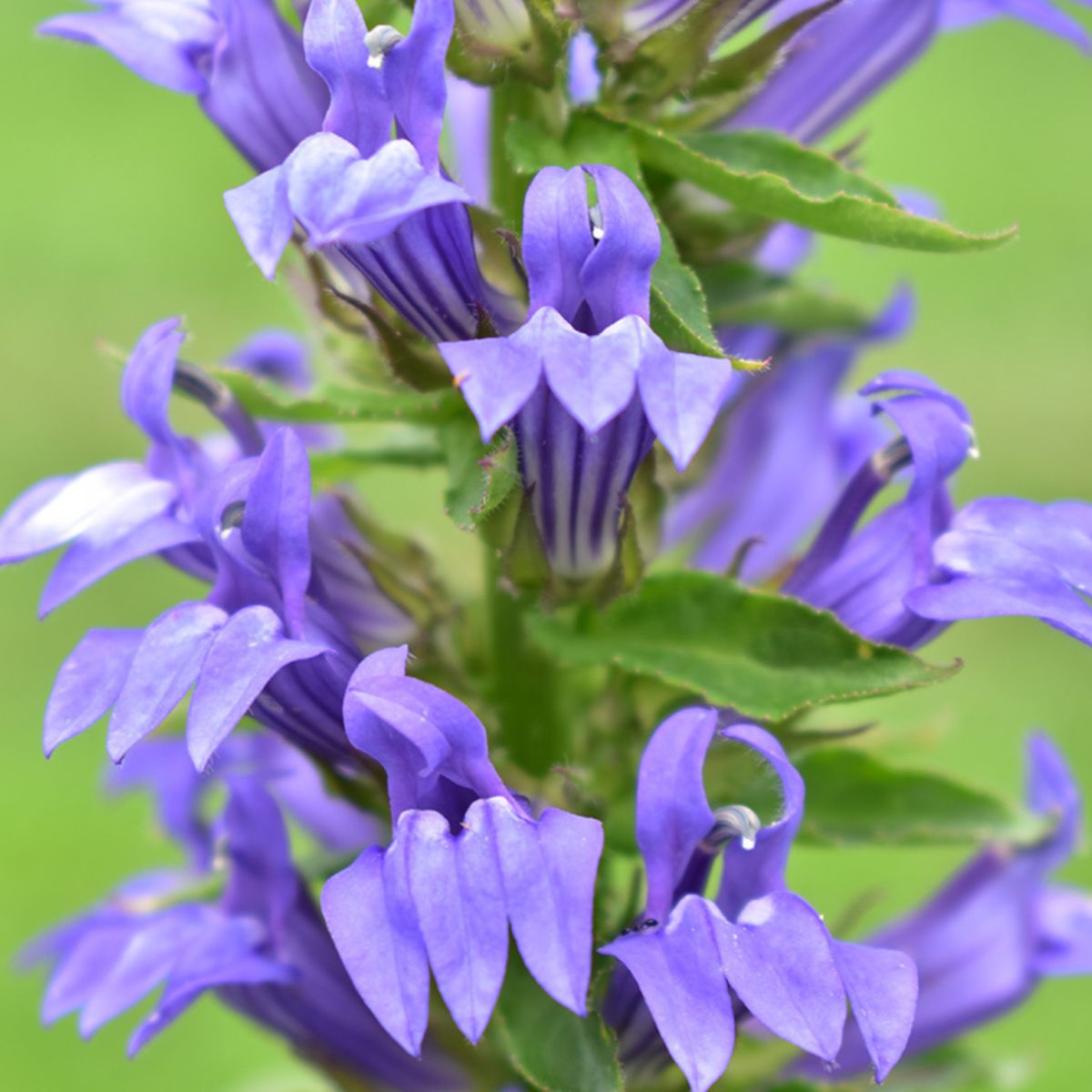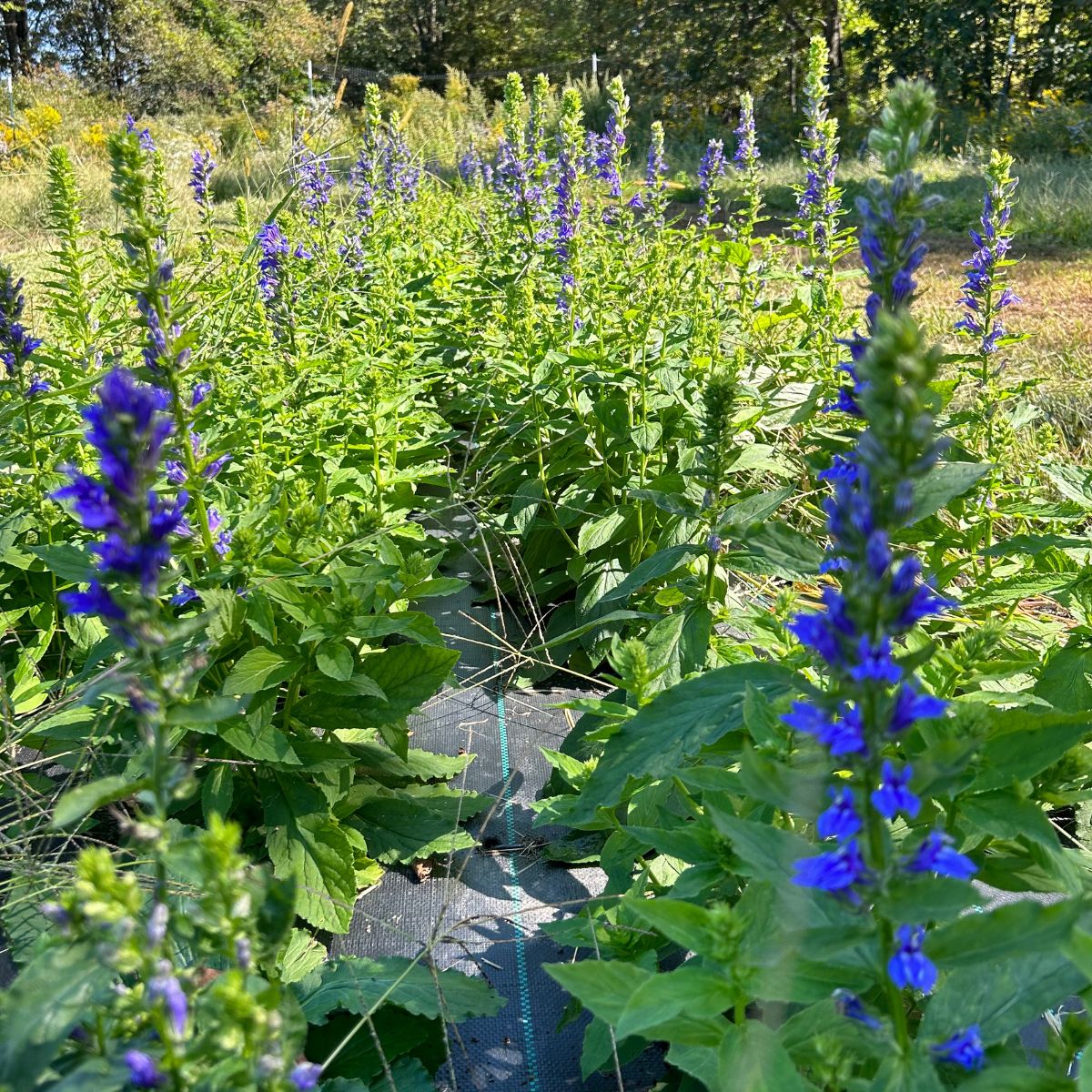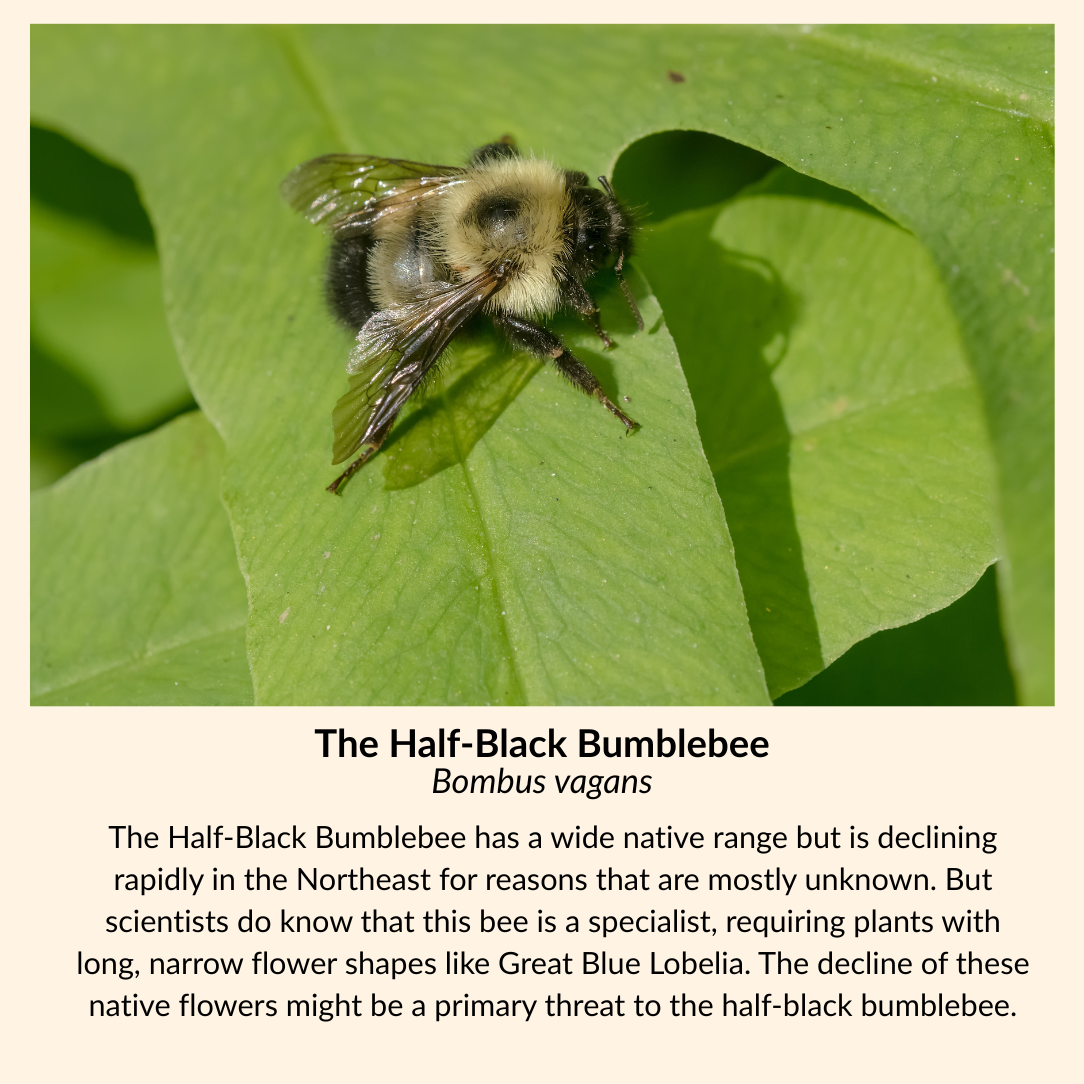Great Blue Lobelia - PollinateHV Local Ecotype
Lobelia siphlitica
Certified Organic
Pollinators adore these pretty spikes of purple blooms.
An easy-to-grow native plant with spires of beautiful purple blooms, Great Blue Lobelia is a long-blooming source of nectar in the summer and fall. It’s known to support at least three native Hudson Valley bumblebees whose populations are threatened or declining. It thrives in moist (but not sodden) soils—as well as partial shade—making it a great native plant for many dappled-light gardens around homes, under trees, or in dense neighborhoods.
This local ecotype seed is of Hudson Valley wild origin and has been scaled for production on our farm in Accord, NY.
PollinateHV is a collaboration between the Hudson Valley Seed Company and Partners for Climate Action Hudson Valley in support of threatened native pollinators.
We worked with a team of expert botanists, seed collectors, nursery growers and farmers to produce local ecotype native seeds to support at-risk Hudson Valley pollinators. You can find more information about this project at pollinatehv.org/seed-work. Learn more about the Hudson Valley's threatened pollinators and find resources to install pollinator habitat at all scales at pollinatehv.org.
Buy 5 PollinateHV Seeds, Get +1 FREE
Couldn't load pickup availability
Growing instructions
Product Details
| Days to Maturity | 160 days |
|---|---|
| Days to Germination | 10 - 30 days |
| Width at Maturity | 12-18" |
| Height at Maturity | 30-36" |
| Hardiness Zone Range | 4 5 6 7 8 9 |
| Sun Conditions | Partial Sun (4-6 hours Sun), Full Sun (8+ Hours Sun) |
| Planting Depth | Barely Cover |
| Row Spacing | 18-24 inches |
| Plant Spacing | 12-18 inches |
Pollinator Partners
The Northern Amber Bumbplebee uses Great Blue Lobelia as major nectar source. This bumblebee is native to much of the eastern United States and Midwest, with a conservation rank os S3 (vulnerable) in New York. A ground-nesting bee, it's often found in fields, orchards, forest edges and hedgerows. Overwintering queen bees emerge later in spring than many other hibernating bee species.
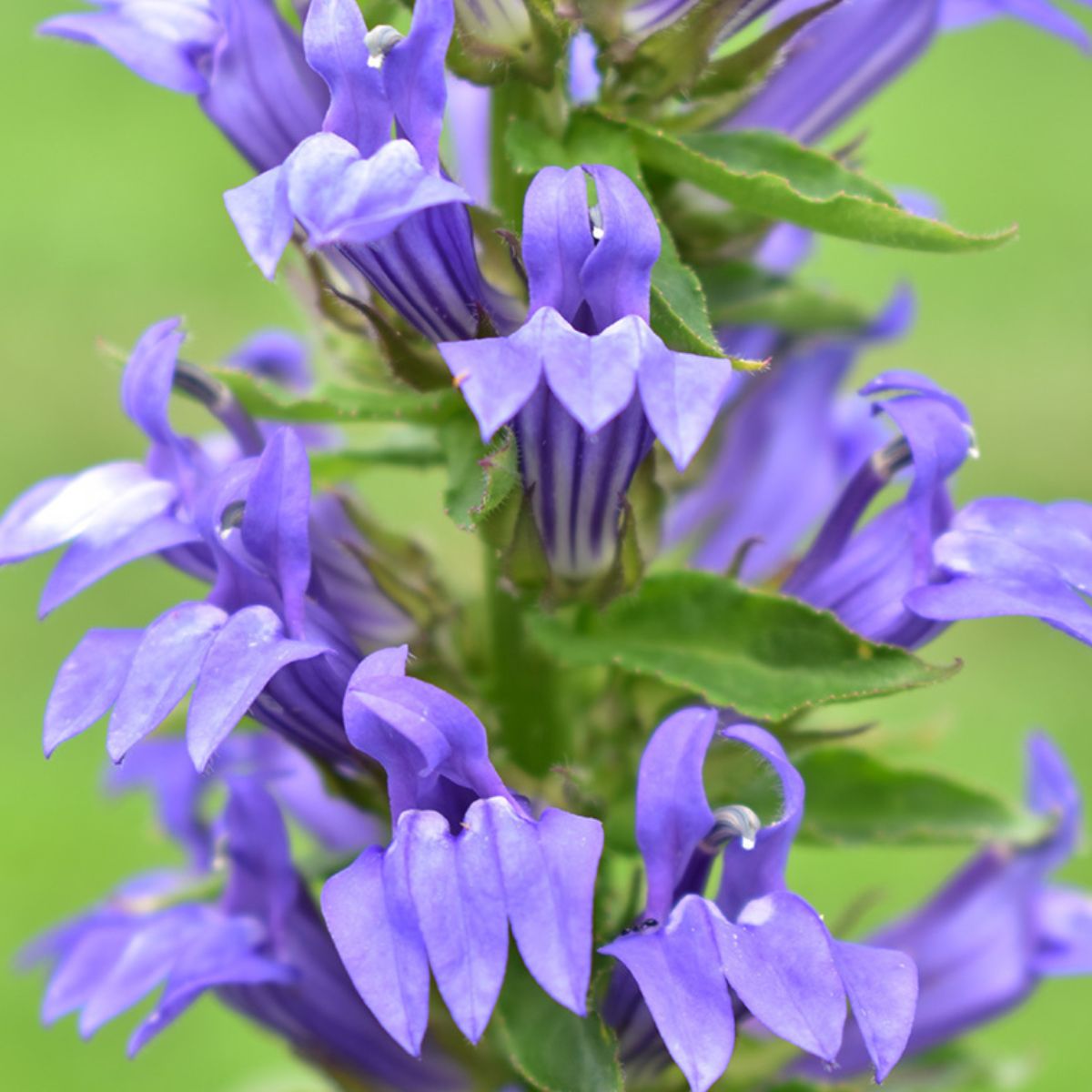
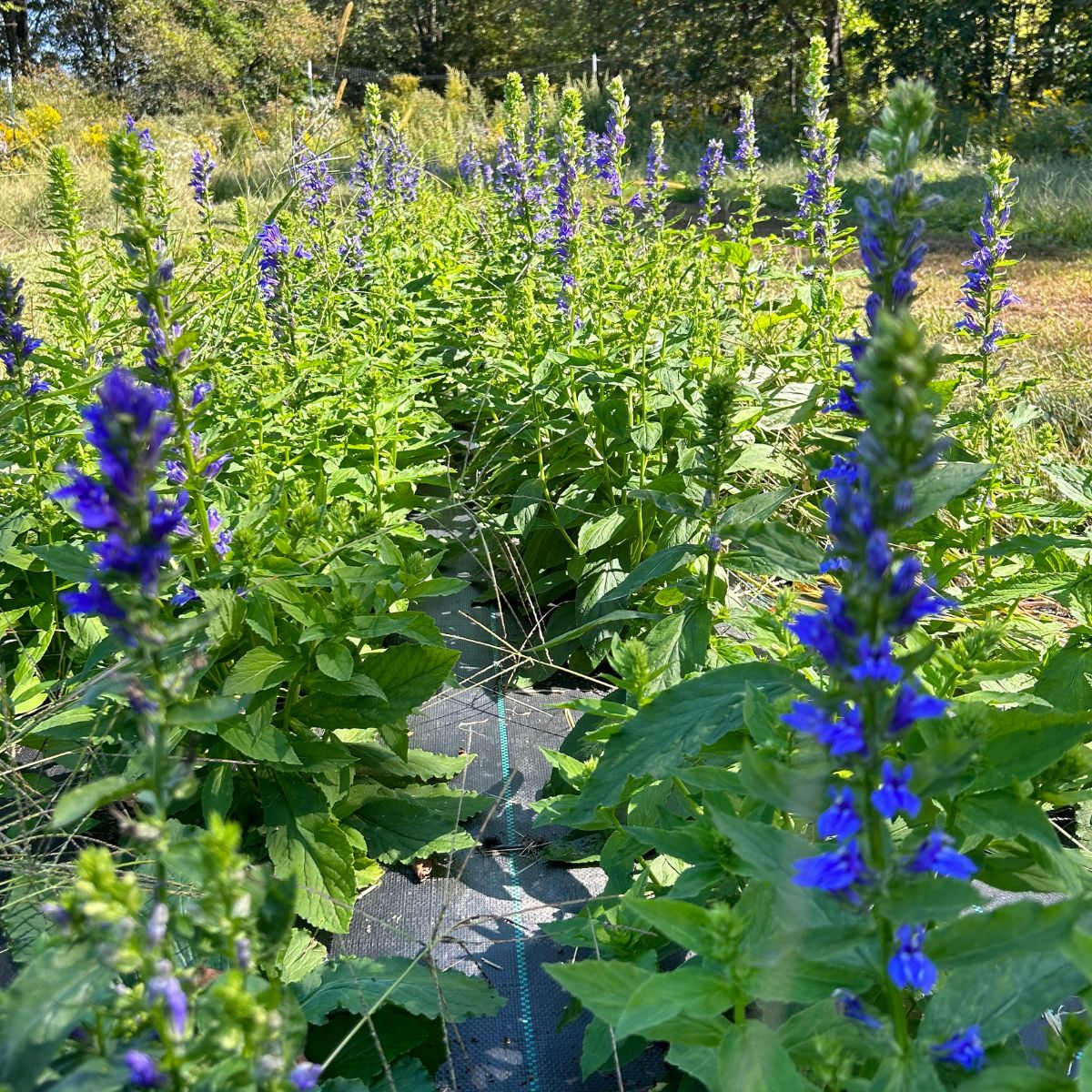
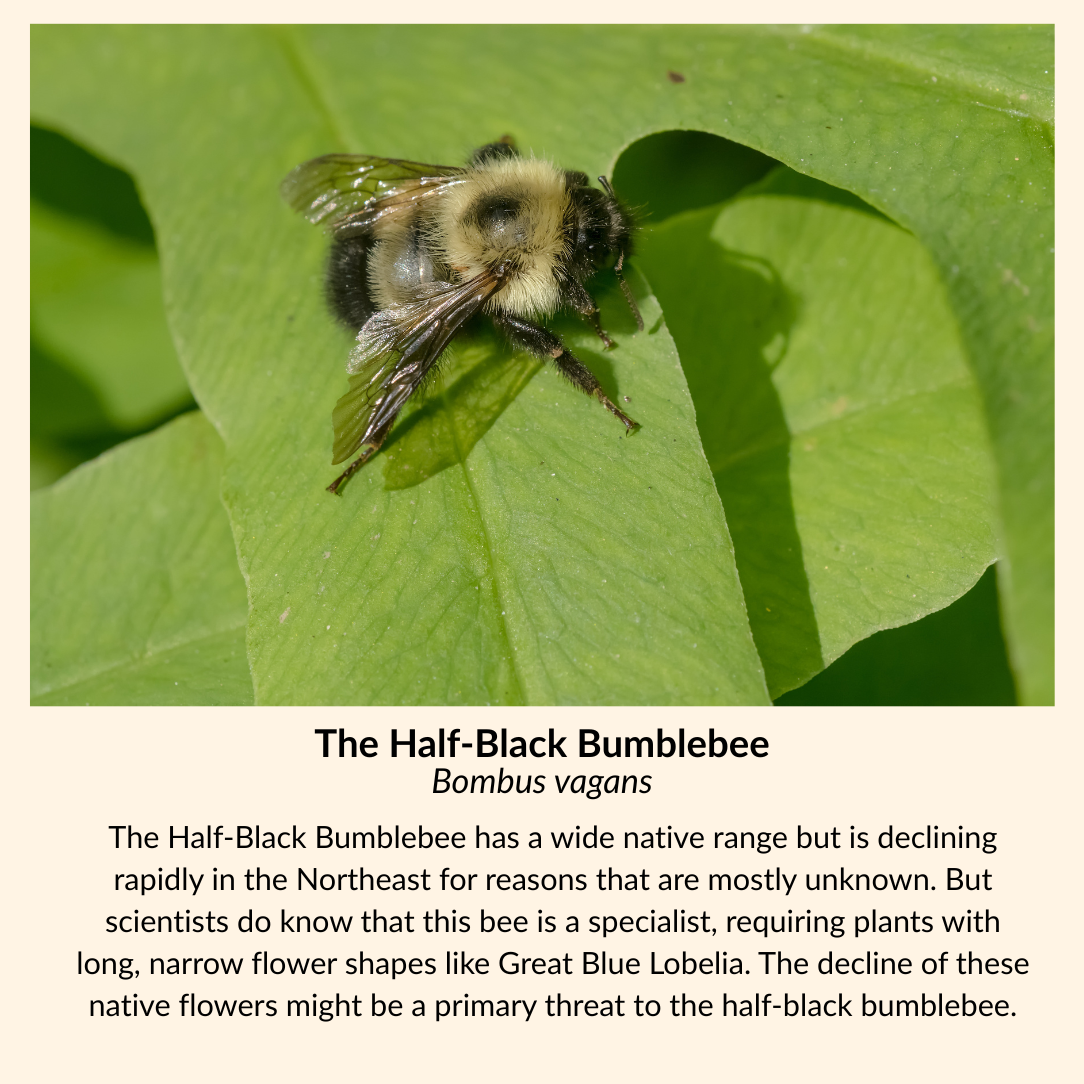


Great Blue Lobelia - PollinateHV Local Ecotype
- Regular price
-
$5.79 - Regular price
-
- Sale price
-
$5.79


